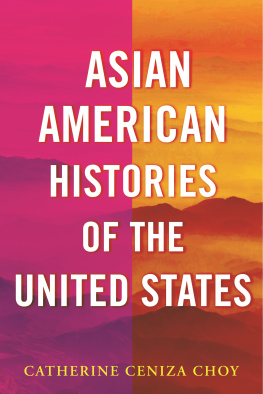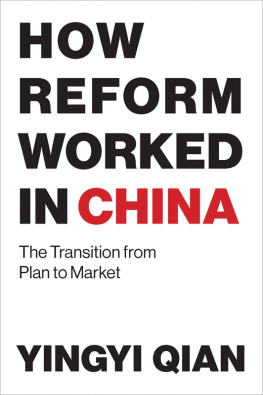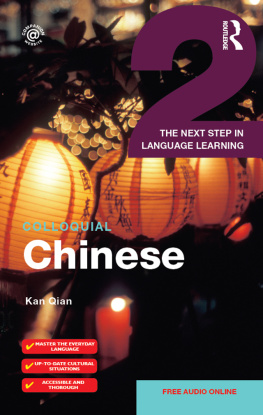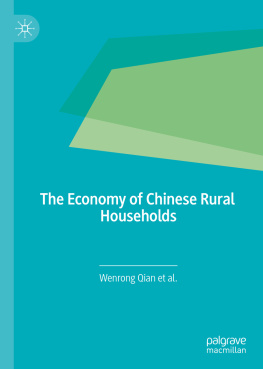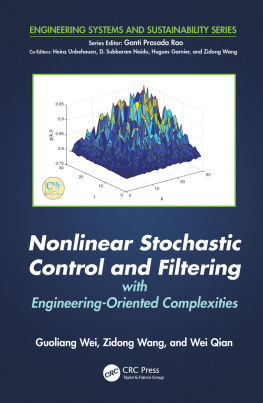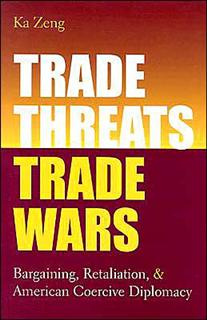ROUTLEDGE LIBRARY EDITIONS: BUSINESS AND ECONOMICS IN ASIA
Volume 3
ASIAN AND UNITED STATES MARKET REACTIONS TO TRADE RESTRICTIONS
ASIAN AND UNITED STATES MARKET REACTIONS TO TRADE RESTRICTIONS
QIAN SUN
First published in 1996 by Garland Publishing, Inc.
This edition first published in 2019
by Routledge
2 Park Square, Milton Park, Abingdon, Oxon OX14 4RN
and by Routledge
52 Vanderbilt Avenue, New York, NY 10017
Routledge is an imprint of the Taylor & Francis Group, an informa business
1996 Qian Sun
All rights reserved. No part of this book may be reprinted or reproduced or utilised in any form or by any electronic, mechanical, or other means, now known or hereafter invented, including photocopying and recording, or in any information storage or retrieval system, without permission in writing from the publishers.
Trademark notice: Product or corporate names may be trademarks or registered trademarks, and are used only for identification and explanation without intent to infringe.
British Library Cataloguing in Publication Data
A catalogue record for this book is available from the British Library
ISBN: 978-1-138-48274-6 (Set)
ISBN: 978-0-429-42825-8 (Set) (ebk)
ISBN: 978-1-138-31281-4 (Volume 3) (hbk)
ISBN: 978-0-429-45800-2 (Volume 3) (ebk)
Publishers Note
The publisher has gone to great lengths to ensure the quality of this reprint but points out that some imperfections in the original copies may be apparent.
Disclaimer
The publisher has made every effort to trace copyright holders and would welcome correspondence from those they have been unable to trace.
ASIAN AND UNITED STATES MARKET REACTIONS TO TRADE RESTRICTIONS
QIAN SUN
Copyright 1996 Qian Sun
All rights reserved
Library of Congress Cataloging-in-Publication Data
Sun, Qian, 1956-
Asian and United States market reactions to trade restrictions / Qian Sun.
p. cm. (Financial sector of the American economy )
Revision of the authors thesis (Ph.D.Arizona State University, 1991).
Includes bibliographical references and index.
ISBN 0-8153-2626-2 (alk. paper)
1. ProtectionismUnited States. 2. Balance of tradeUnited States. 3. StocksPricesUnited States. 4. StocksPrices Taiwan. 5. StocksPricesKorea, South. I. Title. II. Series.
HF1756.S83 1996
382.50973dc20
96-36693
Printed on acid-free, 250-year-life paper
Manufactured in the United States of America
To my parents
The effect of U.S. protectionist policy on stock prices of firms in the U.S. and abroad is still an open question. In theory, the effects are ambiguous. While common intuition may suggest that greater U.S. trade restrictions will harm foreign firms that export to the U.S. market and benefit U.S. firms, such effects need not occur. Models exist that suggest protectionist policy may increase profits and prices of both domestic and foreign firms when goods are substitutes in oligopolistic markets. As a result of the theoretical ambiguities, the issue of stock price effects of trade restrictions is an empirical question. Evidence like that presented in the following pages is required to understand the real-world dynamics.
An investigation of the effects of trade restrictions must be executed at the level of the individual firm. Previous researchers have explored the sensitivity of U.S. firm values to trade restrictions but have not examined the effects on foreign firms. A major contribution of this paper is to extend the analysis to its sensible next step, what are the effects on individual foreign firms? In recent years, the availability of firm-level data for foreign markets allows such an analysis. By focusing on Asian firms that export to the United States, the study focuses on a region that has concerned U.S. policymakers due to the apparent comparative advantage that resides in that region for a broad category of manufactured goods. Specifically, the analysis of Asian industries that have been involved in trade disputes with their U.S. counterparts, provides a strong test of the effects of trade restrictions on stock prices.
As with all event-type studies in finance, issues of dating the arrival of information are important. For instance, if the U.S. International Trade Commission announces that U.S. producers have been injured by Asian television manufacturers, one expects that Asian TV exporters will find their stock prices falling with the announcement. In the particular case of televisions, Korean firms had negative abnormal returns associated with the announcement of damage to U.S. firms and alleged dumping by the Korean firms. Several months following the initial announcement of damage, the Korean firms were able to successfully document that their home-market prices were lower than originally thought. The announcement that penalties were being reduced was associated with positive abnormal returns.
This book is a gold mine of information regarding episodes like the one just discussed. Only through careful analysis of the data, using appropriate statistical techniques, can we expect to learn how trade protectionism affects stock prices. Such analysis is of interest to investors and portfolio managers seeking to understand the dynamic adjustment of stock prices of multinational firms around trade conflict events. Beyond the investment dimension, the analysis in this text has also a pure scholarly contribution. Rather than rely on assertion by politicians or involved parties to understand who gets hurt in trade protection disputes, we can instead turn to the impartial view of the equity markets to gain independent evidence regarding the benefits and costs of trade protectionism. Qian Sun has given us a book that provides needed evidence on one of the major policy isues of our time.
Michael Melvin
May 1996
The purpose of this book is to examine the possible impact of U.S. trade restrictions and trade deficit news on stock prices of U.S. import-competing and Korean and Taiwanese export-oriented firms. The persistently large U.S. merchandise trade deficit has sparked off a series of U.S. trade conflicts trade restrictions with its trading partners These events have been hot topics among academics, the general public, and policy makers. The topics are hot because they have wide implications to trade-related firms, the general public, and international relations. Many authors have studied the impact of the trade deficit and trade restrictions from a macroeconomic perspective, i.e., the impact on employment rate, national income, consumer welfare, etc.. This book tries to measure the impact at the firm and/or industry level. It is well known that a stocks price reflects the publics expectation of the firms future cash flows and their associated risks. Any new information that affects this expectation will affect the stock price. According to market efficiency hypotheses, if trade restriction and trade deficit news contain such information, it should be immediately reflected in the firms stock price. By examining the impact on stock prices, this book can shed some lights on the following two issues. First, do trade restrictions benefit the U.S. import-competing firms and hurt foreign export-oriented firms? The empirical evidence on this issue has a direct implication on the effectiveness of the trade restrictions. Second, does the trade deficit news signal an increased probability of imposing trade restrictions or a further loss of competitiveness of U.S. import-competing firms? The empirical evidence on this issue shows how the market reads the trade deficit news.






